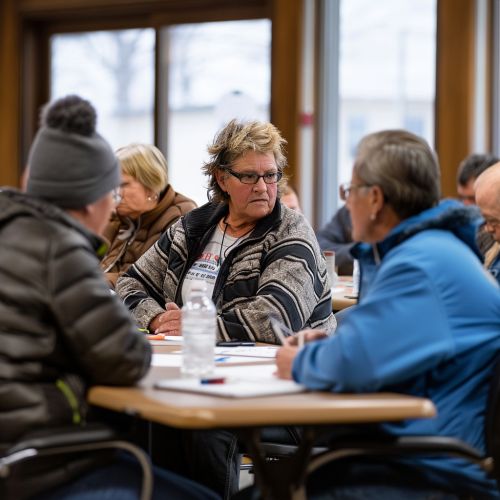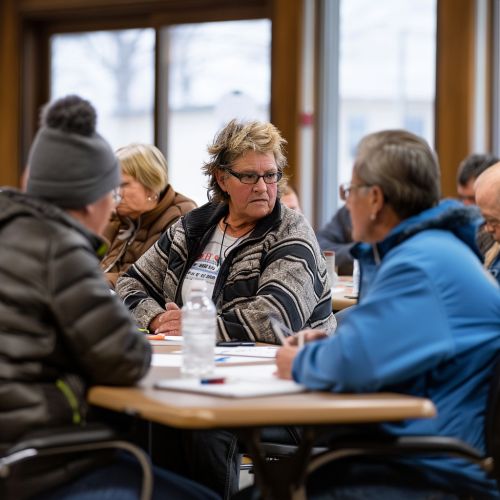Participatory Democracy
Introduction
Participatory democracy is a model of democracy in which citizens have the power to make decisions directly, rather than through elected representatives. This form of democracy emphasizes broad participation of constituents in the direction and operation of political systems. Participatory democracy aims to create opportunities for all members of a political group to make meaningful contributions to decision-making, and seeks to broaden the range of people who have access to such opportunities.
Historical Background
The concept of participatory democracy can be traced back to ancient Athens, where citizens participated directly in decision-making processes. However, the modern interpretation of participatory democracy emerged in the 20th century, influenced by social movements and political theorists who sought to address the limitations of representative democracy. The civil rights movement, feminist movement, and various grassroots organizations have all contributed to the development and implementation of participatory democratic practices.
Theoretical Foundations
Participatory democracy is grounded in several key theoretical principles:
Deliberative Democracy
Deliberative democracy emphasizes the importance of informed and reflective discussion among citizens. It posits that democratic legitimacy arises from the public deliberation of free and equal citizens. This model encourages the exchange of arguments and reasons, aiming for consensus or at least mutual understanding.
Direct Democracy
Direct democracy involves citizens making decisions without intermediary representatives. Mechanisms such as referenda, initiatives, and recall elections are examples of direct democratic processes. These tools allow citizens to vote directly on specific issues or policies.
Civic Engagement
Civic engagement is a core component of participatory democracy. It involves citizens actively participating in the political process, from voting to engaging in community organizing and public deliberation. Civic engagement is seen as essential for the health and vitality of a democratic society.
Mechanisms of Participatory Democracy
There are various mechanisms through which participatory democracy can be implemented:
Participatory Budgeting
Participatory budgeting is a process in which citizens directly decide how to allocate part of a public budget. This mechanism allows community members to identify, discuss, and prioritize public spending projects, and gives them the power to make real decisions about how money is spent.


Citizens' Assemblies
Citizens' assemblies are gatherings of randomly selected citizens who deliberate on specific issues and make recommendations. These assemblies are designed to be representative of the broader population and provide a space for informed and reflective discussion.
Deliberative Polling
Deliberative polling combines deliberation in small group discussions with scientific random sampling to provide public consultation for public policy and for electoral issues. Participants are polled on their opinions before and after deliberation to measure changes in opinion.
Benefits and Challenges
Benefits
Participatory democracy offers several benefits:
- **Enhanced Legitimacy:** Decisions made through participatory processes are often seen as more legitimate because they involve direct input from citizens.
- **Increased Transparency:** Participatory mechanisms can increase transparency in decision-making processes, reducing corruption and fostering trust in government.
- **Empowerment:** By involving citizens directly in decision-making, participatory democracy can empower individuals and communities, fostering a sense of ownership and responsibility.
Challenges
Despite its benefits, participatory democracy also faces several challenges:
- **Scalability:** Implementing participatory mechanisms on a large scale can be difficult and resource-intensive.
- **Inclusivity:** Ensuring that all voices are heard and that participation is truly representative can be challenging. Marginalized groups may still be underrepresented.
- **Complexity:** Some issues may be too complex for direct citizen involvement, requiring specialized knowledge and expertise.
Case Studies
Porto Alegre, Brazil
One of the most well-known examples of participatory democracy is the participatory budgeting process in Porto Alegre, Brazil. Since its inception in 1989, this process has allowed citizens to decide on the allocation of a portion of the municipal budget, leading to more equitable and transparent public spending.
Iceland's Constitutional Reform
In 2010, Iceland embarked on a participatory process to draft a new constitution. This process involved a national forum of 950 randomly selected citizens and a Constitutional Council that incorporated public input through social media and other platforms. Although the new constitution has not been fully implemented, the process itself is a significant example of participatory democracy in action.
Criticisms
Participatory democracy is not without its critics. Some argue that it can lead to decision-making that is less efficient and more prone to populism. Others contend that it may not always result in better outcomes, as citizens may lack the necessary expertise to make informed decisions on complex issues. Additionally, there is concern that participatory processes can be co-opted by powerful interests, undermining their democratic potential.
Future Directions
The future of participatory democracy may involve the integration of digital technologies to facilitate broader and more inclusive participation. Online platforms and tools can enable more people to engage in deliberative processes, providing new opportunities for civic engagement. However, the digital divide and issues of online misinformation and manipulation must be addressed to ensure that these technologies enhance rather than undermine democratic processes.
See Also
- Deliberative Democracy
- Direct Democracy
- Civic Engagement
- Participatory Budgeting
- Citizens' Assemblies
- Deliberative Polling
References
<References to be added if available>
